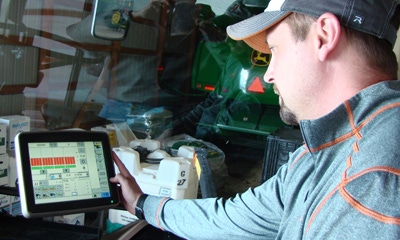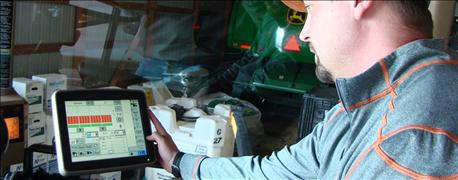May 25, 2016

Mike Morehouse and family have used experimenting to their advantage in their ready embrace of technology for precision farming. The family farms in southern Elkhart County.
They have a weather station on their farm that provides a wealth of information, all broken down on a field-by-field, or even smaller, basis. A quick look at Morehouse's cellphone can give a real-time summary of soil temperature for each of their 16 soil types; soil moisture; rainfall by the day, week, month or year; and much more. Historical yield and other agronomic data for fields and sections of fields are also immediately available in their system.

MORE THAN GADGETS: Brad Morehouse, Mike’s son, works in the precision farming industry and passes a lot of what he learns along to his family.
Armed with all this data, the Morehouses enter a prescription into their planter to apply inputs precisely, and not just to the field, but to each particular sector of the field. Morehouse says doing so enhances their profitability in two ways — cutting fertilizer costs and maximizing yield by matching inputs to soil type and yield history.
“One spot in the field might get 31,000 seeds per acre, while the next spot might get 36,000,” he says. “Prescription farming allows us to precisely put inputs where we need them, instead of putting on excess where we don’t need it.”
Matching inputs with needs pays
Morehouse says having the ability to match each soil type with exactly what it needs has yielded some impressive results for their operation, which translate to a better bottom line.
“This technology has allowed us to take some of our poorer soils, which may have historically yielded only about 80 bushels of corn per acre, and by applying precisely what it needs, to make it more productive, bring it up to 150 bushels per acre,” he says. “Precision farming, plus the adoption of cover crops, has really turned our farm around in the last 16 years.”
“Technology’s not cheap to buy,” Morehouse continues. "But if we can use it to our advantage, we can make it pay. That’s the way we look at it.”
Boone writes from Wabash.
You May Also Like




